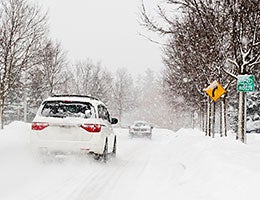 With temperatures getting dangerously
low this winter, staying safe and healthy is very important. Staying indoors
does not necessarily guarantee safety. Prepare your home and cars for power
outages or emergencies with these tips. Remember
to also stay safe while participating in outdoor activities.
With temperatures getting dangerously
low this winter, staying safe and healthy is very important. Staying indoors
does not necessarily guarantee safety. Prepare your home and cars for power
outages or emergencies with these tips. Remember
to also stay safe while participating in outdoor activities.Prepare your home:
One of the
most important things to do is to check your heating systems. Although many of
us live in apartments and complexes maintained by a land lord, we should take
initiative for our safety.
·
Check
your Carbon Monoxide (CO) detector for working batteries. This detector
will
alert you when the deadly, odorless, colorless gas is present.
o
Symptoms
of CO poisoning: headaches, nausea and disorientation.
·
Check
or ask when the last time your heating system was checked. You want to make
sure it is clean, working properly, and ventilating to the outside.
·
Check
your smoke detector. Batteries should be tested monthly.
·
Have
a safe alternate heating source and fuels available.
Be
prepared to check on family and neighbors that may be at risk from cold weather
hazards. Examples are young children, older adults, and the chronically ill.
Bring your pets indoors if you can’t ensure they have a warm outdoor shelter and
drinking water that won’t freeze. Although pets grow a winter coat, it may not
be sufficient during severe weather conditions to keep them warm.
Prepare
your car:
Make sure
you have the right tools in case of an emergency; whether you are traveling far
or just a short distance from home, being prepared can make a world of a
difference. · Service your car regularly. Make sure you check your radiator, maintain antifreeze
levels, check tire tread and replace tires if needed with all-weather/snow tires.
· Keep your gas tank full to avoid ice in the fuel lines and tank.
· Use the wintertime windshield washer formula.
· Organize a winter emergency kit to keep in your trunk at all times in case you
become stranded. Include:
o Blankets
o Food and Water
o Booster cables, flares, tire pump, and a bag of sand or cat litter
(for traction)
o Compass and maps
o Flashlight, battery-powered radio, and extra batteries
o First-aid kit
o Plastic bags (for sanitation)
If you are
planning on traveling by car, be sure to check the weather forecast and road
conditions throughout your trip.
- Avoid traveling during weather advisories.
- Inform friends and family of the route you are planning to take and your expected time of arrival.
- If you become stranded:
(the length of a swimming pool) but continue to move your arms and legs.
o
Put
a bright cloth on your antenna to stay visible to other travelers.
§ You can also turn on the overhead
light (when the engine is running) and raise the hood of the car once the snow
has stopped falling.
o
Run
the engine and heat for just 10minutes at a time every hour.
o
Open
a downwind window slightly open.
o
Make
sure the tailpipe is not blocked.
Power Outages and Weather-related emergencies
Just because you are indoors doesn’t guarantee you are safe.
Prepare for long stretches of power outages by doing the following:
·
Stock up on food that does not need to be cooked or
refrigerated.
·
Store water in clean containers.
·
Keep your emergency kit up to date with:
o Battery
operated devices (flashlight, weather radio, and lamps)
o Extra
batteries
o First-aid
kit and extra medicine
o Baby items
o Cat litter
or sand for icy sidewalks.
Outdoor
Activities:
Spending some time outdoors during the winter months is
refreshing and fun. If you are spending time doing work, traveling, or
participating in sports outdoors, prepare for possible exposure to safety
hazards.
·
Wear
layers of light, warm clothing (mittens, hats, scarves, and waterproof boots)
·
Sprinkle
cat litter or sand on ice patches.
·
Be
aware of the wind chill factor.
·
Work
slowly when doing outdoor chores.
·
Take
a buddy and an emergency kit when joining in outdoor recreation.
Carry a cell phone


No comments:
Post a Comment